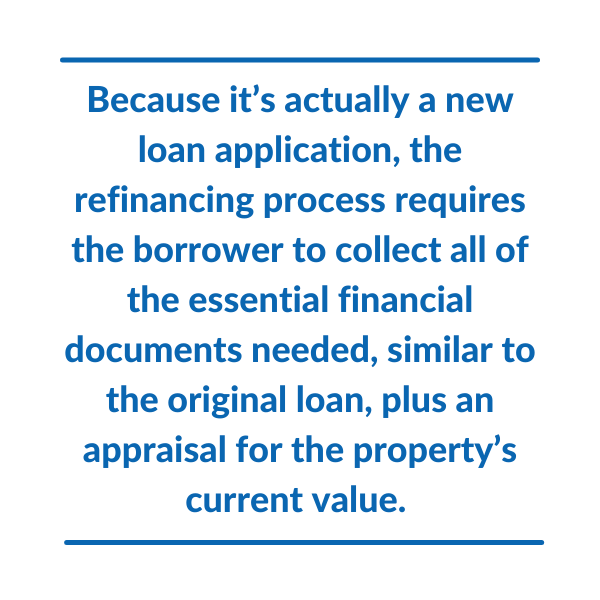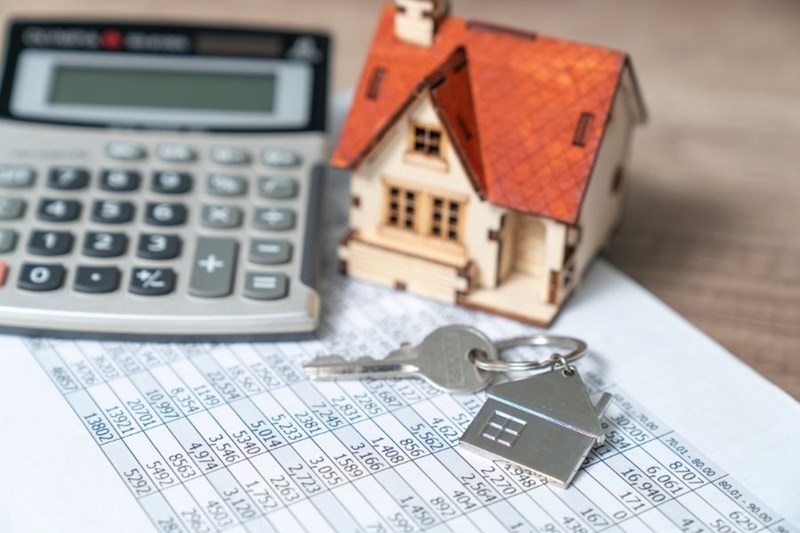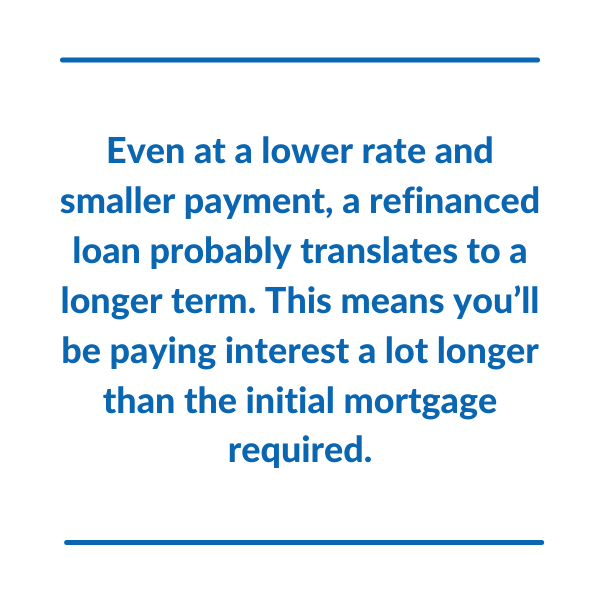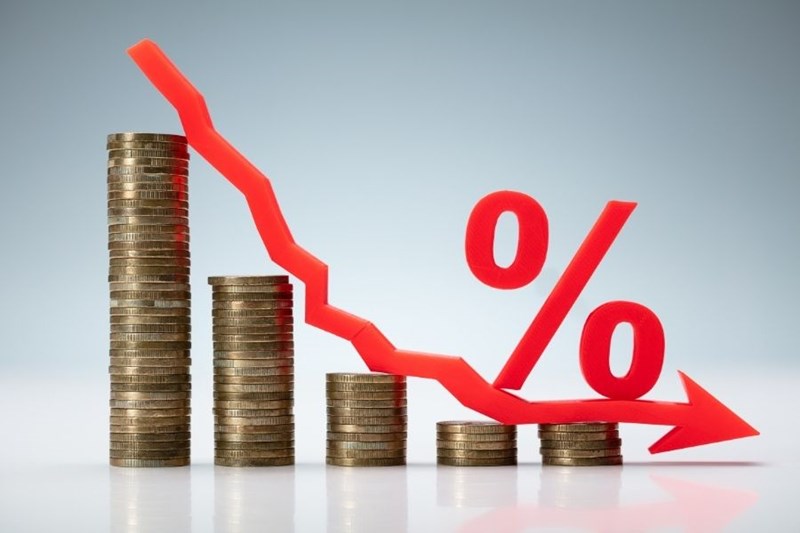
Photo from Canva
In this article:
Securing a mortgage is no easy feat, especially for first-time homebuyers serving in the military. Later, when the time is right, you might consider refinancing your mortgage to reduce interest payments or the length of the loan. However, the refinancing process can be just as stressful as your original loan if you’re not aware of the process or haven’t adequately prepared.
Your lender created the initial terms of your home loan by calculating your financial situation and the national interest rate at the moment of application. But what if those terms have changed from many years ago? Investigating a loan refinance might be beneficial.
It takes some mathematical sleuthing to see if the fees are less than the ultimate savings. But with the help of a refinancing calculator and professional guidance, refinancing might be worth the hassle.
What Is Refinancing?
Refinancing sounds like simply applying to change the terms of a loan in your favor, but actually, the initial loan is paid in full, and a new, second loan with better terms is acquired. Because it’s a new loan application, the refinancing process requires the borrower to collect all the essential financial documents, similar to the original loan, and an appraisal for the property’s current value.

To apply, you’ll need to round up the latest versions of:
- Financial assets such as retirement and savings accounts
- Verifiable employment and income histories
- Credit scores and reports
- A recent home appraisal
Take a look at the pros and cons of refinancing in our post, Should You Refinance Your Mortgage?
When Is the Best Time to Refinance?
As a starting point, most lenders require the original mortgage to be held for at least 12 months, but there are some variations. If more favorable interest rates catch your eye, assess your credit history and scores to correct errors. This is also true for other financial accounts if there have been changes in income.
If you’re considering refinancing, it is not the time to cosign a loan for a family member, buy a car, or make any purchase that will change your financial situation. These debt-inducing transactions reduce your ability to qualify for the lowest interest rates.
Knowing the tipping point or your break-even numbers will help you gauge the best time to refinance. This is a tricky feat requiring thorough preparation and a professional mortgage lender’s help.

Photo from Canva
How Do You Prepare for Refinancing?
Preparation is more than just gathering documents. Here’s where the math sleuthing begins. Finding an easy to use online refinance calculator helps to keep the numbers in perspective.
You should also feel comfortable shopping for and understanding the new loan terms, including interest rates and associated fees. It’s common to receive favorable refinancing terms from the lender who offered the initial mortgage because they’d rather maintain you as a customer than lose you altogether.
After contacting possible lenders (compare multiple offers side by side to choose the best option), they will provide a loan estimate with the terms, projected monthly payments, closing costs, and other necessary fees. Save early to pay cash for the fees; this helps to lower the overall payment.
The following scenarios are typical money savings vs. costs decisions to consider before starting the refinancing process.
Is there a clause in your loan that penalizes prepayment of the mortgage? The penalties vary, so verify how much it will cost you to pay early.
Consider future tax returns. If you claim your mortgage interest on a tax return, a refinanced rate equals less mortgage interest as a deduction.
A refinanced loan probably translates to a longer term, even at a lower rate and smaller payment. This means you’ll pay interest much longer than the initial mortgage required. Remember that loans are designed to add the most interest in the early payments. Then, later into the life of the loan, payments are pushed more into the principal.
The new loan will be laden with fees: application, appraisal, title searches, legal, origination, and insurance fees are all possibilities. Adding these up will help determine if the refinancing process is profitable.

The new loan will be laden with fees: application, appraisal, title searches, legal, origination, and insurance fees are all possibilities. Adding these up will help determine if the refinancing process is profitable.
return to top of page
5 Reasons Borrowers Refinance

More often than not, borrowers hope to refinance their loan to capture a lower interest rate, likely saving thousands of dollars in interest over the years, as well as possibly shortening the length of their loan. But there are other reasons, including tapping into equity for home improvement projects and discontinuing private mortgage insurance (PMI).
Ultimately, the overall goal is to lower mortgage payments while at the same time offsetting potential refinancing fees in the shortest amount of time possible.
1) When researching refinancing options, you’ll probably read about a “rate-and-term” refinance because it's the most popular way to save money. The goal is to simultaneously reduce the current interest rate and payback schedule length (likely from a 30 to 15-year loan). You could potentially save thousands of dollars over the life of the loan, but don’t forget about the fees mentioned above and that, to max out these savings, your monthly payment will likely increase.
2) If yours is an Adjustable Rate Mortgage (ARM) and it’s scheduled to increase, it’s worth investigating if you qualify for a lower interest rate than the planned bump in rate. It's also possible to refinance an existing ARM for a new one with a better payback schedule.
3) Cash-out refinancing is available by withdrawing equity (the difference between the loan amount owed and the property's value.) This is a logical option if the equity is significant or the loan is fully paid. Homeowners use this money for many reasons, including down payments on another house, home improvements, and credit card debt. Remember that with this option, your refinance loan amount is larger because it equates to the equity amount you’re taking out.
4) Cash-in refinancing is different because it allows you to apply for a lower interest rate, a shorter loan term, or the choice to put more money down during the refinancing to avoid mortgage insurance. Basically, you’ll pay a lump sum payment to swap your current mortgage for a new one with a smaller principal balance.
5) Some borrowers refinance their home loans because they pay for private mortgage insurance (PMI) and want to reduce PMI payments. With a new, refinanced loan, it's possible to reduce those monthly costs. Another way to save and eliminate PMI is to refinance from an FHA loan to a conventional mortgage after accumulating 20% equity in the property.
Refinancing your mortgage isn’t a one-size-fits-all and completed-in-one-day kind of deal. However, by collecting the necessary information well in advance, continuously monitoring the housing finance markets, and even maintaining an open relationship with a lender, the benefits of a refinanced deal could handsomely outweigh the annoyance of the process.
By Dawn M. Smith